As small and medium businesses grow, meeting various compliances and obtaining certifications can be beneficial. The National Institute of Standards and Technology (NIST) outlines a set of cybersecurity guidelines that SMBs can use to look towards the future and better improve their security posture and ability to protect client data. Figuring out which certifications to aim for may be tricky, but NIST is a strong starting point for your business’ compliancy journey.
What is NIST?

NIST is a part of the Department of Commerce (DoC) and its goal is to create technology and security standards that strengthen business cybersecurity and improve a company’s ability to secure the data they use to do business. NIST provides guidelines for compliancy that dictate minimum standards for how business need to protect data based on best practices and industry standards. All federal agencies and companies that work with governing bodies must comply with NIST, and getting this certification will help companies meet other compliances such as the Health Insurance Portability and Accountability Act (HIPPA) and CMMC.
Why SMBs Want Compliance

Being NIST compliant means that a company can bid for, sign, and maintain government contracts, but its primary benefit is an improvement in cybersecurity. Because it is a highly valued government standard, SMBs can use NIST as a cybersecurity roadmap to ensure they keep client information safe and remain competitive in their field. Failing to implement appropriate cybersecurity standards can cause a small business to close its doors overnight, and malicious actors are always on the lookout for low hanging fruit. Becoming NIST compliant can make clients feel more secure with how their data is being stored and prepare your business for any needed certifications in the future as you develop as a company.
Cybersecurity Guidelines

At a high level, NIST has five guidelines that outline its approach to ensuring cybersecurity compliance that follow the lifecycle of a breach in cybersecurity. Each of these guidelines will have their own goals and standards that must be met to achieve certification, but they represent what a business should focus on to best protect their data. The guidelines include:
- Identify: Companies must identify the network data, systems, and hardware that must be secured.
- Protect: Cybersecurity tools such as firewalls, endpoint protection, MFA and more must be implemented to protect the identified data and systems.
- Detect: Companies must have security tools that allow an attack to be identified, and these tools must detect the attack and any aftereffects of the attack.
- Respond: A business will develop a strategy for responding to the threat of a cybersecurity attack. This plan will include methodology, an explanation of the tools that will be used, and any other necessary steps to remediating a threat.
- Recover: Companies must plan for how to handle a successful attack. Needed tools and plans for acquiring data backups, re-securing control of the network, and recovering from downtime must be written out and prepared.
Summary
While NIST will allow an SMB to contract with the government, aiming to become compliant can provide many other benefits for a company’s IT environment. The guidelines for NIST provide a crucial roadmap for new businesses, and compliancy can help your business standout against competition and make your clients feel more secure about giving you their data. Our team here at Robinett Consulting values meeting compliances, and we want to help provide your business the tools and services it needs to meet any compliancy goals you have.





